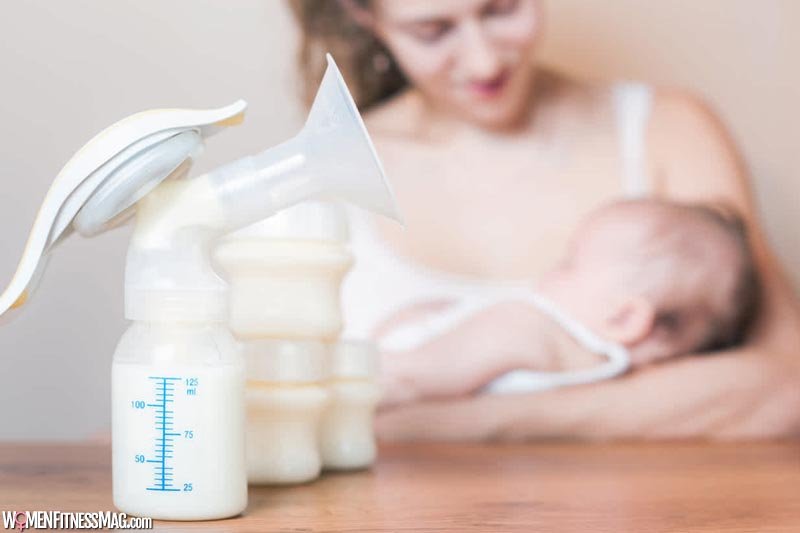Breast Pumping Schedules and How They Impact Milk Production : New moms sometimes struggle to find the right pumping schedule for themselves and their babies. That’s not surprising – after all, it’s something completely new to you and your little one! Even if you’re welcoming your second, third, or fourth baby, seasoned parents know that each one has their own personality and preferences – especially when it comes to feeding routines!
As a result, there are a lot of questions to answer along your breastfeeding journey as you discover the pumping schedule that works best for you both. When is the best time to pump? How often should you pump? Which lactation supplements should I use to support my milk production? You may also worry about pumping and milk supply. Will pumping reduce your milk supply? Is there a pumping schedule to increase your milk supply?
The short answer to common milk supply concerns is that pumping will not reduce your milk supply, and can even increase your supply in some situations.
Factors That Impact Milk Production
Your hormones, including oxytocin and prolactin, control your milk production for the first few days after your baby is born. In the early days after delivery, you won’t see large volumes of breast milk. Colostrum, or your “first milk”, plays a different and important role for your newborn than your later mature milk. It will also only be expressed in small amounts – which is just what your newborn’s tiny stomach needs right then!
Hormones will continue to affect milk production, but frequent, consistent expression through nursing and/or pumping will soon be the most important factor determining how much milk your body produces. Think of milk production as a supply and demand system – Regular milk removal leads to more milk production. The more you express, the more your body will make to ensure your baby’s growing needs are taken care of. Your body adapts to increased demand by increasing the supply it produces.
Impact of Pumping on Milk Production
After a consistent nursing routine is well-established, pumping is a convenient way to express milk and begin building a supply of refrigerated and/or frozen liquid gold for your little one. This is especially helpful if you will be returning to work soon.
Our tips for integrating pumping into your routine before your return to work include:
- Begin pumping about two weeks before your anticipated return to work.
- Be sure to pump once in the morning and once in the evening.
Pumping Schedules and Milk Production
Some moms often find a pumping schedule helps them to stick to their breast milk feeding plan easier. The best schedule is completely based on you, your unique needs, and breastfeeding situation. Other important considerations include whether you are exclusively pumping or pumping alongside nursing, how old your baby is, and how often you and your baby are apart (such as whether you’ve returned to work or if your little one is sometimes with another caretaker).
Exclusive Pumping Schedule
- Newborn: An ideal goal is to pump 8-12 times every 24 hours. This means you’ll be pumping at least every three hours. So, if you start the day at 6 a.m., then you’ll pump at 6 a.m., 9 a.m., 12 p.m., 3 p.m., 6 p.m., 9 p.m., 12 p.m., and 3 a.m.
- 4-6 months old: By this age, six or seven sessions per 24 hours are sufficient. A typical schedule is 6 a.m., 10 a.m., 2 p.m., 6 p.m., 10 p.m., and 2 a.m.
- Over 6 months old: Plan for about four or five sessions per 24 hours, with the following pumping schedule: 6 a.m., 11 a.m., 3 p.m., 7 p.m., and 11 p.m.
You should expect to produce somewhere between 25-35oz of milk per 24-hour period. Remember, your goal is to increase your milk supply by frequently and thoroughly emptying your breasts. You know better than anyone that every mom and baby is different, so these schedules are just a suggestion. Feel free to adapt them as it makes sense for your needs and those of your baby.
Pumping While Breastfeeding Schedule
If you want to pump while nursing to begin building a supply of milk for your baby after your return to work, consider adding pumping sessions to encourage milk production. However, it is important to note that pumping too frequently or too much while nursing can cause overproduction, which can lead to mastitis. We suggest the following:
- Begin pumping 2 weeks before returning to work. If you know the date you’ll be returning to work, plan to start introducing pumping into your breast milk feeding routine approximately two weeks prior. Not only will this help encourage milk production, but it will also give you a chance to familiarize yourself with your pump and its parts so you can be totally ready to use it as needed at your workplace.
- Pump twice per day. Use your breast pump once in the morning and once in the evening.
If you need additional help with your milk supply, don’t hesitate to talk to your pediatrician or lactation consultant. They can help you resolve any breastfeeding questions or concerns while ensuring your baby gets the nutrition that he or she needs to thrive.
Related Videos about Breast Pumping Schedules and How They Impact Milk Production :
Breast Pumping Schedules and How They Impact Milk Production
how often should i pump if i’m breastfeeding, how to combine breastfeeding and pumping, disadvantages of pumping breast milk, will pumping every 2 hours increase milk supply, when to start pumping for storage, exclusive pumping schedule to increase milk supply, how often should i pump to increase milk supply, how much milk should i be pumping at 1 week,




